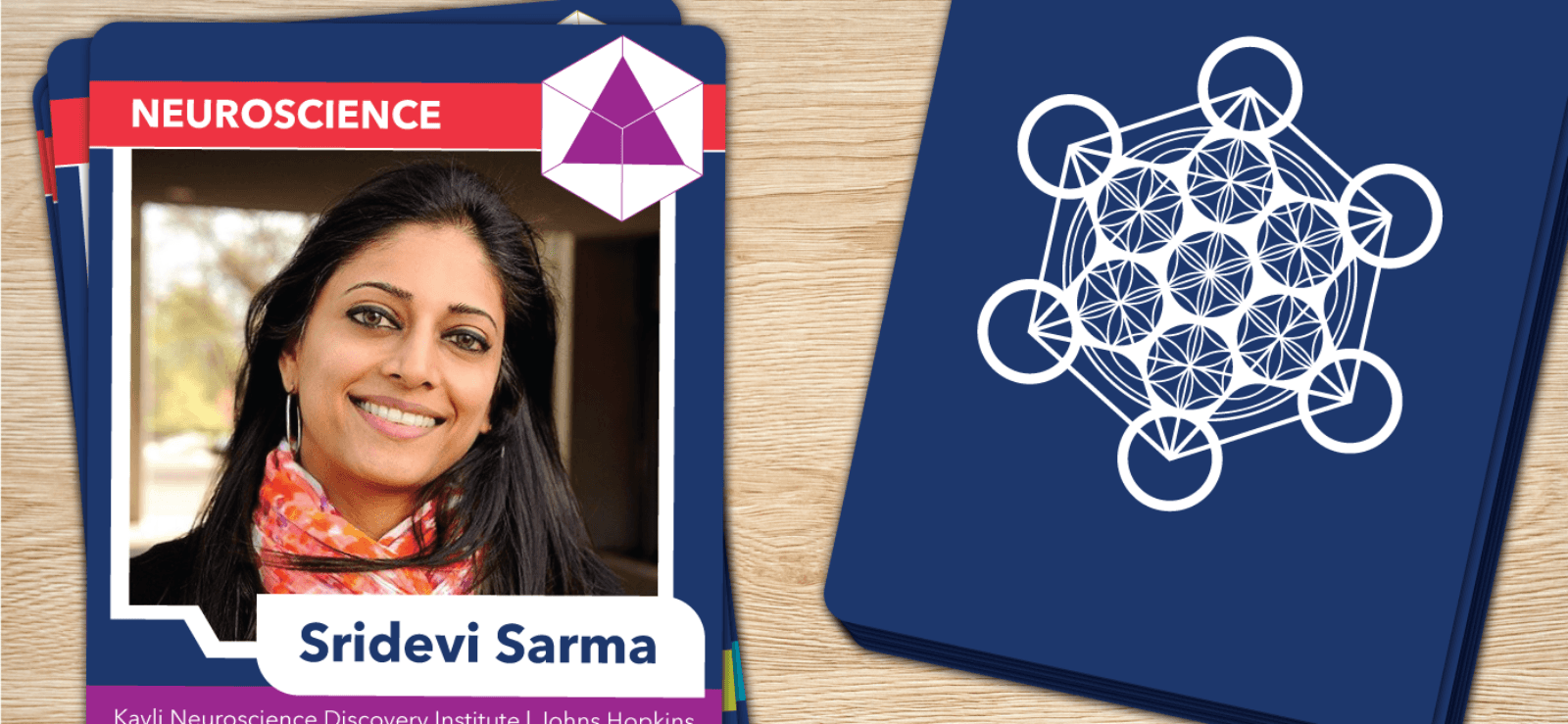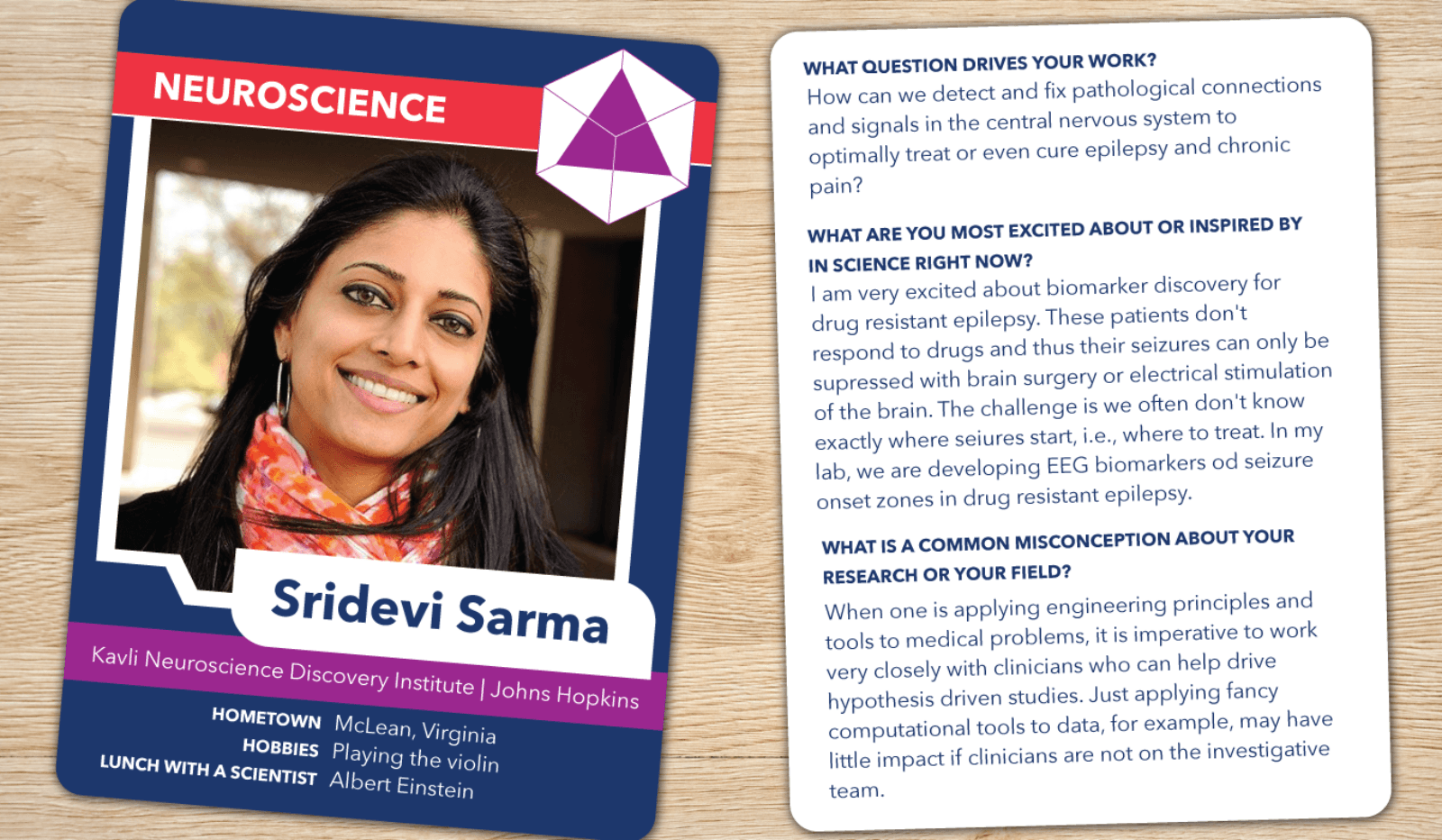Patterns in the Brain
Q&A with Sridevi Sarma, member of the Kavli Neuroscience Discovery Institute

The Researcher
QUICK FACTS
Hometown: McLean , VA
Favorite movie: Forest Gump
Most unusual job: Making sandwiches at Au Bon Pain
Hobbies: Playing the violin

How did you first become interested in science? Who or what inspired you?
I am trained as an electrical engineer, but became very interested in neuroscience in graduate school. I was inspired by Sue Corkin, a famous neuroscientist from MIT, when I took a course with her. We studied the various sensory systems in the brain, and I did a case study on my aunt who had a very early onset of Parkinson's disease when we were discussing the motor system and disorders of the motor system. Dr. Corkin sat with me and watched my video recordings of my aunt and followed up with intense conversations about why my aunt was early onset and my finding that her onset may have been hormone-related. She treated me as a colleague, and that was the moment that inspired me to pursue neuroscience.
What is the question that most drives your work right now?
How can we detect and fix pathological connections and signals in the central nervous system to optimally treat or even cure epilepsy and chronic pain?
How would you explain your research to a kindergartener?
The brain is made up of electrically excitable cells that "light up" or activate much like light bulbs being switched on an off in special patterns. These electrical patterns in the brain are what make us think, sense, feel, and move in this world. When someone has a brain disease, these patterns get distorted, or worse, turn they turn "off." I study why this happens in the brain, where it happens in the brain, and how I can "restore patterns" with electrical stimulation - a fancy way of saying that we can control electrical patterns in the brain much like controlling a light switch.
What are you most excited about or inspired by in science right now?
I am very excited about biomarker discovery for drug-resistant epilepsy. These patients don't respond to drugs and thus their seizures can only be suppressed with brain surgery or electrical stimulation of the brain. The challenge is we often don't know exactly where seizures start, i.e., where to treat. In my lab, we are developing EEG biomarkers of seizure onset zones in drug resistant epilepsy.
What do you wish everyone knew about your research or your field?
When one is applying engineering principles and tools to medical problems, it is imperative to work very closely with clinicians who can help drive hypothesis driven studies. Just applying fancy computational tools to data, for example, may have little impact if clinicians are not on the investigative team.
If you could go back in time to the start of your career, what advice would you give yourself?
Work more in teams and disseminate findings in a timely manner - and perhaps be more bold as a young investigator.
What scientist, dead or alive, would you most like to have lunch with and why?
Einstein. I want to understand how to convince scientists to work on theories that seems impossible or even absurd before they are developed. For example, what would he say about paranormal phenomena? Near death experiences? Reincarnation?